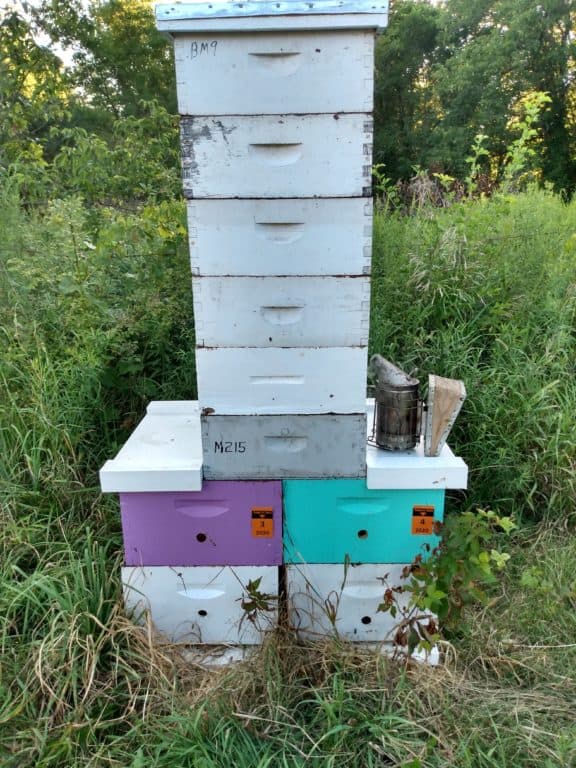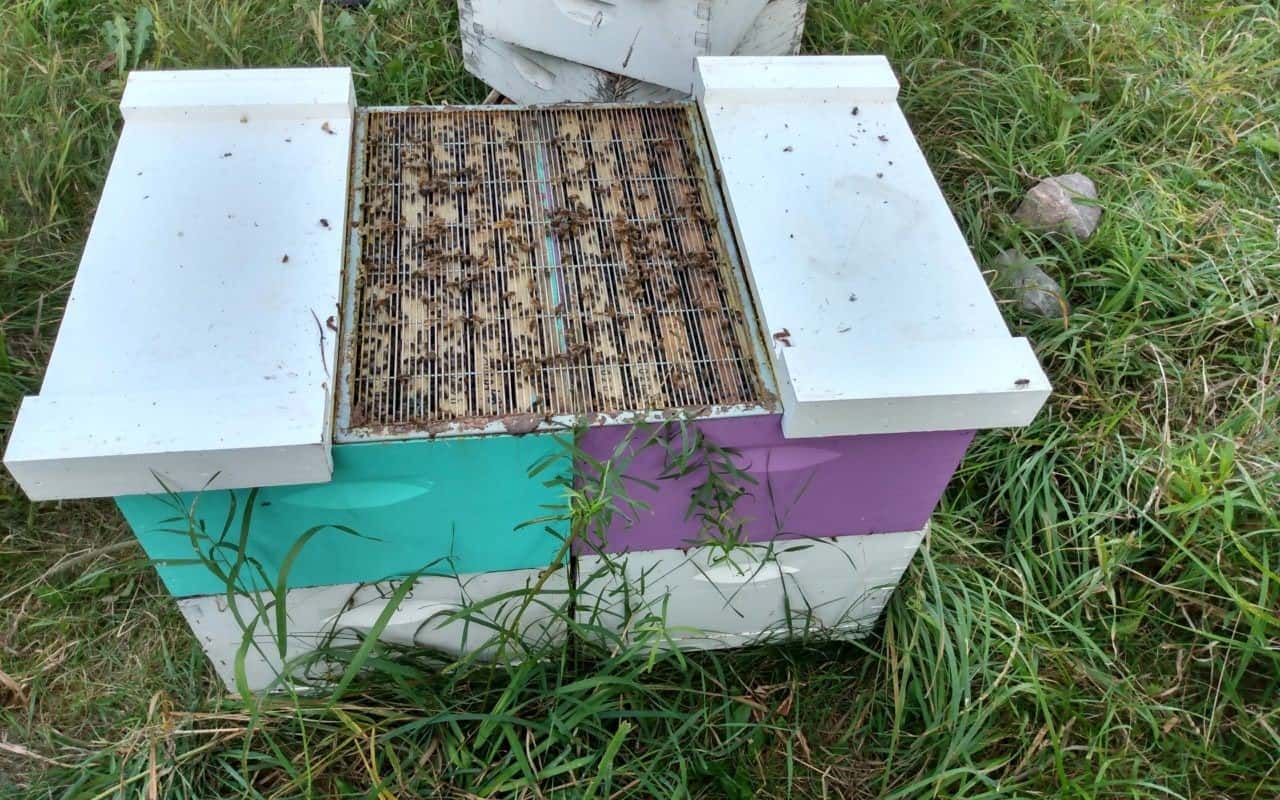One of the first things beekeepers learn, often even before getting bees, is that a colony has many bees but just a single queen. While this is surely true in the vast majority of colonies, I have seen two queens coexisting enough times—and even once found three in a single brood box—to know that the things we beekeepers know as rules may only be viewed as guidelines by the bees themselves. Another thing you learn very early in beekeeping is that a single stack of boxes represents a single colony. The colony is the unit, living in a hive of its own, discrete from the other colonies in the apiary, aside from drifting foragers or robbing bees. Somewhere along the way, inventive beekeepers started straying from the conventional wisdom of “one queen per hive” and exploring two-queen hives with a variety of methods.
In hives where two queens are found occupying the same space, it is not possible to easily determine if one is dominant, laying the majority of eggs. Neither is it possible to know the exact pheromone conditions that result in the toleration of two queens. Beekeepers know if they tried to force a scenario of two queens simultaneously roaming the same brood frames by introducing an additional queen to a queenright colony, the new queen would almost certainly be balled and dispatched by the resident bees. Instead, methods have been developed that allow two queens to coexist in a single hive, as long as they occupy separate spaces and remain separated by employing a queen excluder.
From a beekeeper’s perspective, the primary benefit to two-queen colonies is increased honey production. By having two prolific queens laying simultaneously, the total colony population can reach over 100,000 bees, while the population of a single-queen colony generally tops out around 60,000 bees. This can lead to enormous forces of foragers capable of producing large honey crops when nectar is available.
I have most commonly come across two-queen hives in a vertical configuration. While it seems that the bees fare well in this arrangement, it can quickly become unwieldy for the beekeeper as the height of the colony increases. Productive vertical two-queen colonies can reach heights that lead to instability and awkward lifts. The abundance of supers on top make even a cursory brood inspection an exercise in heavy lifting.
An alternative to the vertical two-queen system is to arrange two brood nests side by side with supers in the middle. This is generally referred to as a horizontal two-queen system. Looking at the colony, it appears as two separate but adjacent brood nests, just as two regular colonies would. However, there is a stack of shared supers in the middle, instead of each brood nest having its own stack. This configuration intuitively feels like two hives from a management and record keeping perspective, but a single unit from a production and harvest standpoint.

The horizontal two-queen colony is easy to set up, provided you have adjacent hives with brood nests of equal height. Each brood nest will need its own base. It is worth spending a minute to level the bases and ensure the single-queen excluder fits across the top of the interior side of both brood nests. A pair of half-width lids cover the exterior side of each brood nest. The supers are stacked on top of the queen excluder and covered with a single lid.

There are several benefits to the horizontal two-queen colony. Foremost is that the overall stack of woodenware will be twice as wide at its base and not as high, leading to increased stability and decreased lift height. Another advantage is that the brood nest can be accessed without removing all of the supers. By removing the half cover from each side, the beekeeper has easy access to 5 frames from the brood nest, which should provide a quick confirmation of queen status and colony health.

Placing the drone frame at the top and towards the outside of the brood chamber allows it to be removed and replaced on schedule without breaking down the entire colony, making it much easier to practice drone brood removal. Although drone brood removal alone is unlikely to provide sufficient Varroa control, when practiced correctly, it can help lower the mite pressure on a colony.
Like most things with beekeeping, there isn’t one right or best way to do something, thanks to the malleability of a colony of bees. My early experiences with this two-queen system has shown enough promise to encourage me to keep at it and learn some of the finer points in managing colonies this way. Gaining a better understanding of the nuances of how to manage colonies in this configuration and how they respond to stimuli from both me as a beekeeper and the environment will broaden my understanding of overall bee behavior.
